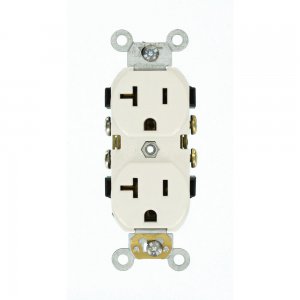Right up front, it is normal for electrical appliances to run warm. Just how warm is "warm" is the issue to deal with. A plug and socket connection is a different matter. It should never be warmer than ambient temperature. A quick test would be to run the blower until the cord plug heats up, quickly unplug the cord and see if the socket is as hot to touch as the plug. If it's warm, the socket is worn. There is a possibility that the cord is too light. If the cord gets hot it's too light. But I would be most concerned about the socket, properly known as the receptical.
"Specification" grade sockets are the norm for residential construction. Then there are the cheap ones from the hardware store that often show up as replacements. They both
will wear out as the stabs lose spring tension. Your best bet is to
replace any one that is questionable. To me, "hospital" grade is the minimum for a shop. Better still, a "30 Amp" socket has even stiffer springs. You won't have any more capacity, that's controlled by the breaker and should not be increased. But check that the wiring is tight at the breaker, a good practice for any circuit. The limitation there is that the "30 Amp" plugs only have 1 outlet on a strap.
Then there's the wiring in the structure. . . The date of construction indicates a possible usage of aluminium wiring. Further, it indicates possible branch circuits of 15 Amp capacity. Use of aluminium wire was outlawed(but "grandfathered") because the difference of expansion rates of aluminium wire and copper wire. As they "work" they expand and contract. Over time this yields "loose" connections which gives even more heat which in turn causes still looser connections. Basically, a forward feedback situation, getting worse with time. A loose connection will get looser over time. Yes, I repeat myself, intentionally. Another thing is that if the wiring
is aluminium, be sure to use the conductive grease when replacing the plug.
Now, to more personal insights. When I bought my house (1975) I rewired it throughout. With
copper. . . Because I use electrical circuits heavily, I used 20 Amp branch circuits throughout. Such eventually became code, but later. The original wiring pre-dated "Romex" cable, hell it predated cables, period. I installed a number of 30 Amp plugs so I could use heavy appliances throughout the house. At the time, I worked for an electrical contractor and lost the job because I didn't like Al wire. . . And said so, many times. The only Al wiring I have is the service entrance and the range plug. And 20 years later,
aeriel cables to the shop and barn. I have replaced a number of sockets for worn springs over the years, it happens. Nothing lasts "forever".
Bill Hudson



